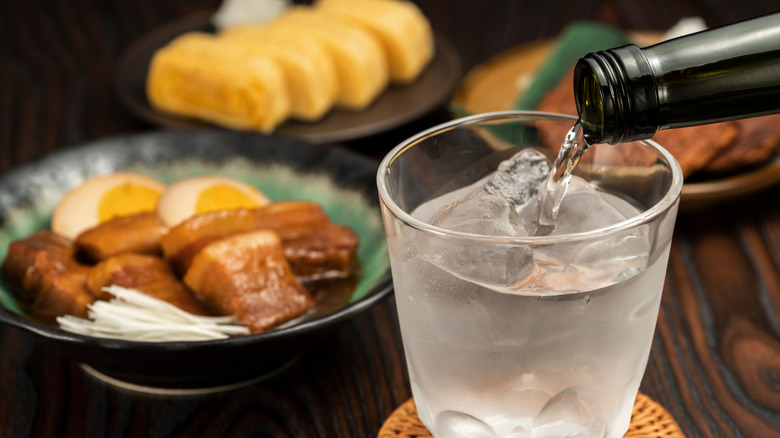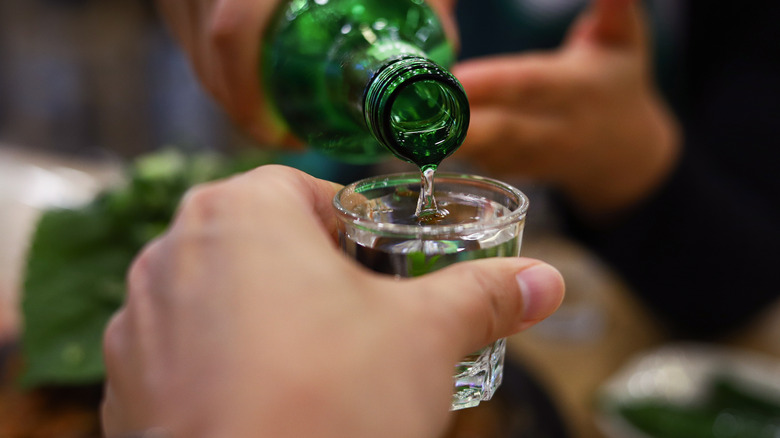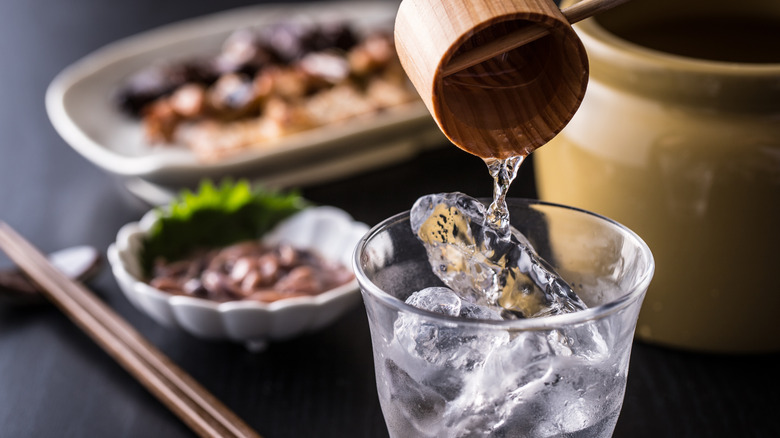The Difference Between Soju And Shochu
Alcohol is ancient. We don't think about it all that much because we're too busy downing some bourbon or sipping on whiskey, but our ancestors were drinking the same kinds of booze we indulge in today, of course with a little modern variation on our part, but still.
It is remarkable to think that the process of distillation (separating a liquid through evaporation) began as early as 2000 B.C. in Mesopotamia (via Copper Alembic). It was used for all kinds of purposes from medicines to booze which was what the infamous Great Khan was enchanted by.
According to World History, drinking alcohol was a large part of Mongol culture: Fermented milk aka Kumis was a favorite of the Mongols as they successfully conquered most of Asia and some of Europe. Yet one of the things that the Great Khan valued and spread knowledge of wherever they traveled was the method of distillation. The Mongols are held responsible for bringing the practice of distilling from Persia all the way to East Asia where individuals in Korea and Japan began experimenting and making their own distilled spirits including soju and shochu.
What is soju?
Soju (소주) is coined South Korea's "National Drink" by 10 Magazine and is widely enjoyed both inside and outside the country. Outside of its characteristic green bottle, the liquor looks as clear and transparent as vodka or ouzo because it is traditionally made of distilled rice and wheat. However, since the mid-20th century, potatoes and tapioca became commonly used as well due to a period when the government banned rice from being used.
KORE Limited tells us that soju was first made in the Korean state of Goryeo as early as the 14th century after the Mongol leader Genghis Khan invaded and left the method of distilling in his wake. The name for this particular distilled drink "soju" translates to "burned liquor" because of its high 35% ABV, which lends a burning sensation to the drink.
Soju brands like Jinro, Chum Churum (처음처럼), and Good Day (좋은데이) are quite popular today because they taste sweeter and are diluted and therefore more palatable to the general public. Town & Country reports that soju is not only beloved in South Korea, but today is a global favorite. The modern watered-down stuff sits at 20% ABV and is fairly cheap, selling at $3 per bottle in South Korea.
What is shochu?
Like soju, shochu is a clear distilled liquor, but this particular drink is not native to Korea. Shochu is a Japanese booze. Archeologists discovered that the first record of the drink was written in 1559 in Isa City on a Temple Shrine (via Japan's Sake and Shochu Makers Association). Though shochu goes through a distillation process, Satsuma Shuzo says that rice grain is first fermented (much like grapes are during the winemaking process) before being distilled.
After distilling the rice wine, shochu comes out to an average ABV of 25%-37% and is served in a lot of different ways including both cold and warm like how sake can be served at various temperatures. It can also be enjoyed over ice, straight up as a shot, or as a base for a cocktail.
According to Boutique Japan, shochu today can be made from rice, barley, or sweet potatoes. Depending on its base, shochu can take on quite a few flavor characteristics and can vary from sweet to dry. In Japan, shochu is more popularly consumed than sake.
Using each in cocktails
Both Korean soju and Japanese shochu are delicious on their own and commonly drunk with a little water dilution or on the rocks, but that doesn't mean that these drinks can't be fantastic when used in cocktails. According to Food & Wine, soju comes in a variety of flavors and is known to be sweet, bitter, and smooth depending on what kind you buy, making it wonderfully versatile.
Traditional soju (without all the additives) is crisp and mild, making for the perfect neutral alcohol to add to a light, fruity cocktail or mixed with soda water for a refreshing spritzer. It is subtle and enhances mixed drinks with simple flavors that aren't overly powerful. However, quite a bit of soju on the market today is flavored with fruity sweeteners making it perfect for drinks like the cosmopolitan or mojito (via Best of Korea).
On the other hand, Chilled Magazine claims that shochu is fairly pungent but tastes smooth on the finish. France44 claims that besides shochu having a fermented base and soju not, the major difference between shochu and soju is "purity."
Shochu legally cannot contain any additives and can only be distilled once, whereas soju can have flavor additives. You could switch out dry soju for shochu in your cocktails, however, they would still taste different due to the difference in alcohol percentage and pungency.



